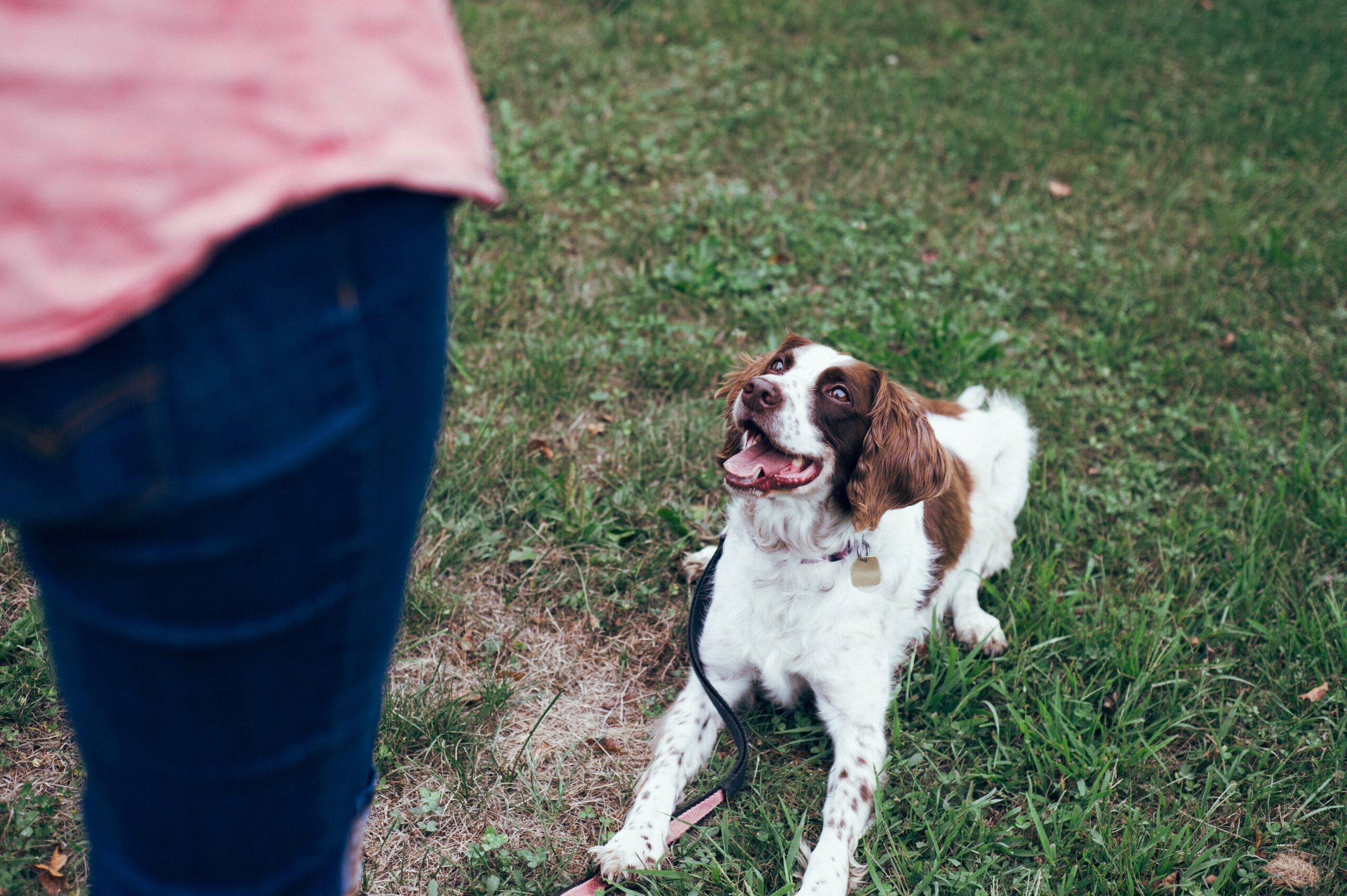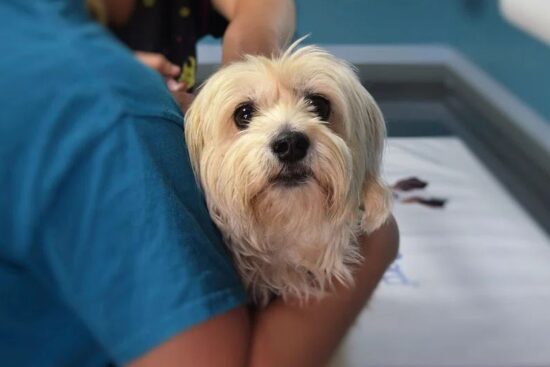
Training your dog is an important part of responsible pet ownership. Teaching your furry companion basic commands not only enhances their behavior but also strengthens the bond between you and your canine friend. In this blog post, we will explore the significance of basic dog training commands and provide step-by-step instructions on how to teach your dog essential commands such as sit, stay, come, and down.
The Importance of Basic Dog Training Commands
- Effective Communication: Teaching basic commands allows you to communicate clearly with your dog, leading to better understanding and cooperation.
- Safety and Control: Commands like “stay” and “come” can keep your dog safe in various situations and provide you with control over their behavior.
- Behavioral Development: Training commands promotes discipline and encourages positive behaviors, helping your dog become well-behaved and obedient.
Teaching Your Dog to Sit: A Step-by-Step Guide to Mastering the Command
Teaching your dog to sit is a fundamental command and a great starting point for their training journey. It’s a versatile skill useful in various situations, from greeting guests politely to waiting patiently at the crosswalk. By using positive reinforcement techniques, you can make learning fun and rewarding for your dog.
Step 1: Gather Your Supplies
- High-value treats (small, tasty morsels)
- Clicker (optional, but helpful for marking the exact moment of the desired behavior)
Step 2: Find a Calm Environment
Choose a quiet area with minimal distractions to help your dog focus on you and the training process.
Step 3: Lure the Sit
- Hold a treat near your dog’s nose, then slowly move it upwards and back towards their head.
- As your dog follows the treat with their nose, their bottom will naturally lower into a sitting position.
- The instant their rear touches the ground, say “Yes!” or click your clicker (if using), and immediately reward them with the treat and praise.
Step 4: Repeat and Reinforce
Practice this lure-and-reward sequence several times in short, positive sessions. As your dog consistently sits when you lure them, start introducing the verbal cue “sit” just as their bottom hits the ground.
Step 5: Fade the Lure
Gradually reduce your reliance on the treat lure. Instead of moving the treat, hold your hand in the same upward motion, saying “sit” as you do so. Reward them with the treat and praise when they respond correctly.
Step 6: Proofing and Generalization
Once your dog reliably sits on command in a quiet environment, start practicing in different locations with increasing distractions. Reward them for successful sits in new settings and around other people or animals. This helps them generalize the command and understand that “sit” means the same thing regardless of the situation.
Additional Tips:
- Keep training sessions short and fun. Aim for 5-10 minute sessions several times a day.
- Use a variety of treats to keep your dog motivated.
- Be patient and consistent. Not every dog learns at the same pace.
- Avoid scolding or punishing your dog for not sitting. Instead, focus on positive reinforcement and rewarding desired behaviors.
Teaching Your Dog to Stay
The “stay” command is an essential part of any dog’s training repertoire. It can be used in various situations, from preventing them from bolting out the door to keeping them calm at the vet’s office. Here’s how to teach this valuable skill:
- Start Simple: Begin with your dog in a sitting or lying down position.
- Introduce the Cue: Hold out your hand like a stop sign and say “Stay” in a calm, clear voice.
- Hold for a Moment: Initially, hold the “stay” for just a second or two.
- Release and Reward: If your dog holds the stay, say “Okay!” and offer them a treat and praise.
- Gradually Increase Duration: Gradually increase the amount of time you ask your dog to stay, adding a few seconds each time.
- Add Distance: Once your dog can stay for a few seconds, start taking a step or two back while they remain in place. Return and reward them for staying. Slowly increase the distance over time.
- Distractions: Practice the “stay” command in different environments with distractions like other dogs, toys, or food. This helps them generalize the behavior and stay focused even when tempted.
- Hand Signals: Incorporate a hand signal (like an open palm facing your dog) along with the verbal cue for added clarity.
- Practice: Consistency is key! Practice the “stay” command regularly in short sessions to reinforce the behavior.
Teaching Your Dog to Come
“Come!” is more than just a command – it’s a safety net, a trust-building exercise, and an essential skill for every dog. Mastering a reliable recall can save your dog’s life in a dangerous situation, make off-leash adventures possible, and make your outings together more enjoyable. Here’s how to train your dog to come when called, step-by-step:
1. Start Indoors:
- Choose a Quiet Space: Begin in a distraction-free area of your home, like a hallway or living room.
- Armed with Rewards: Have high-value treats (think cheese, cooked chicken, or their favorite treats) and a favorite toy ready.
- The Recall Game:
- Show your dog the treat or toy.
- Say their name and “Come!” in an excited, happy tone.
- Enthusiastically praise them when they reach you, and give them the treat or toy as a reward.
- Repeat this exercise multiple times, keeping the sessions short and positive.
2. Increase Distance:
- As your dog gets the hang of it, gradually increase the distance between you before calling them. Start with a few steps, then move to different rooms.
3. Add Distractions:
- Background Noise: Practice with the TV or radio on to mimic the distractions they might encounter outdoors.
- Other People: Have friends or family members help you practice in different environments, like the backyard or a park.
4. Variable Rewards:
- Don’t Always Reward with Treats: Mix it up! Sometimes reward with a toy, a game of tug-of-war, or praise and petting. This keeps your dog guessing and eager to come back.
5. Proofing:
- Different Environments: Practice the recall in a variety of locations – parks, quiet streets, pet-friendly stores. The more diverse the training locations, the more reliable the recall will become.
- Increased Distractions: Gradually increase the level of distraction (other dogs, squirrels) while practicing recall. This will test your dog’s focus and strengthen their ability to come to you even when tempted.
6. Use a Long Line:
- Safety Net: If your dog’s recall isn’t rock-solid, a long line (15-30 feet) allows them some freedom to explore while ensuring you can maintain control.
Pro Tips:
- Never Punish: Coming to you should always be a positive experience. If your dog doesn’t come immediately, avoid scolding or chasing them. This will only make them more hesitant to return in the future.
- Positive Reinforcement: Focus on rewarding good behavior. Praise, treats, and play make coming to you an enjoyable experience.
- Practice Often: Consistency is key! The more you practice recall, the more ingrained the behavior becomes.
- Don’t Overuse the Command: Avoid using “come” unless you’re confident your dog will respond. Overusing the command without compliance can weaken its effectiveness.
- Seek Professional Help: If you’re struggling with recall, consult a certified dog trainer. They can offer personalized advice and training plans tailored to your dog’s needs.
Teaching Your Dog to Lie Down
The “down” command is a valuable tool for calming your dog, controlling their behavior, and enhancing your bond. Whether you’re a new dog owner or just need a refresher, here’s a simple, positive reinforcement-based method to teach your pup this essential skill.
Before You Begin:
- Gather Supplies: You’ll need a quiet space with few distractions, your dog’s favorite treats, and a clicker (optional).
- Start with “Sit”: If your dog doesn’t already know how to sit reliably, start by teaching that command first. “Down” is often easier to learn once your dog masters sitting.
Step-by-Step Instructions:
- Lure with a Treat: Hold a treat in your hand, closed fist. Let your dog sniff it to get their attention.
- Hand Signal: Slowly lower your hand toward the ground, keeping it close to your dog’s nose. Their natural instinct will be to follow the treat with their nose.
- Downward Motion: As your dog’s head lowers, their body should naturally follow into a lying down position.
- Click or Verbal Cue: As soon as your dog is fully down, click the clicker (if using) or say a verbal marker like “Yes!”
- Reward Immediately: Praise your dog enthusiastically and give them the treat.
- Repeat and Reinforce: Repeat this process several times in short sessions. Keep it fun and positive!
- Add the Verbal Cue: Once your dog consistently lies down with the hand lure, start saying “down” just as their elbows touch the ground. Eventually, they’ll associate the word with the action.
- Fade the Lure: Gradually reduce the use of the treat in your hand. Start by showing it to them, then using an empty hand, then just the verbal cue. Reward them with the treat from your other hand.
- Practice in Different Locations: Once your dog has mastered the “down” in a quiet environment, practice in different places with distractions. This helps generalize the behavior.
Conclusion
Mastering basic dog training commands is essential for a well-behaved and obedient canine companion. By teaching your dog commands such as sit, stay, come, and down, you enhance their safety, control, and overall behavior. Remember to utilize positive reinforcement techniques, be patient, and make training sessions enjoyable for your dog. With consistency and practice, you will witness significant progress in your dog’s training journey.




















